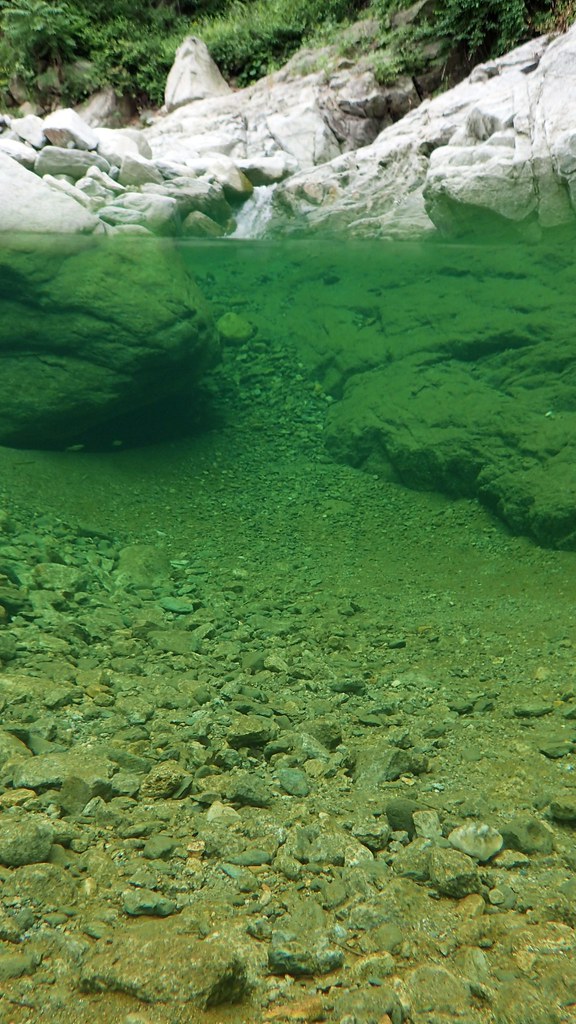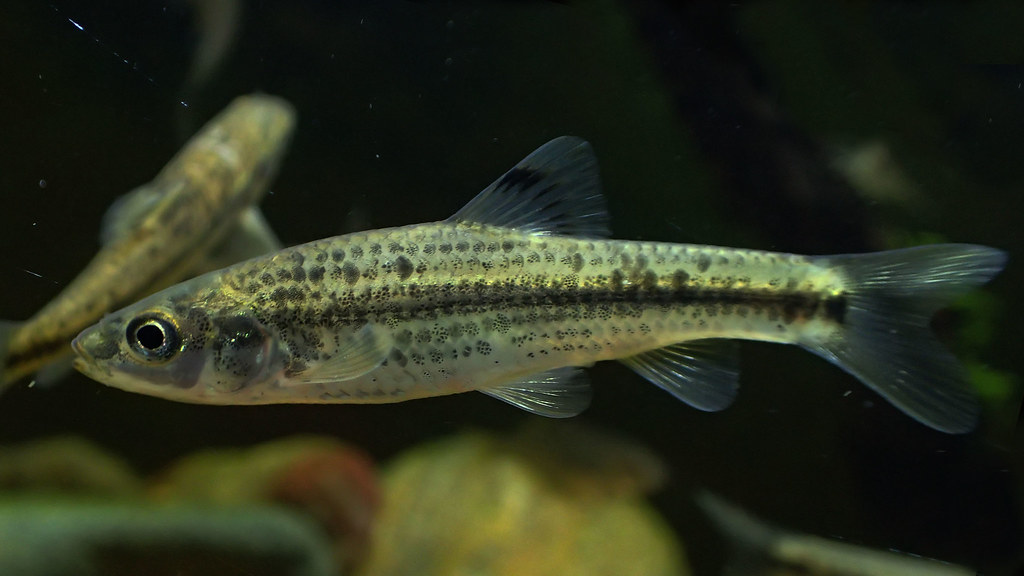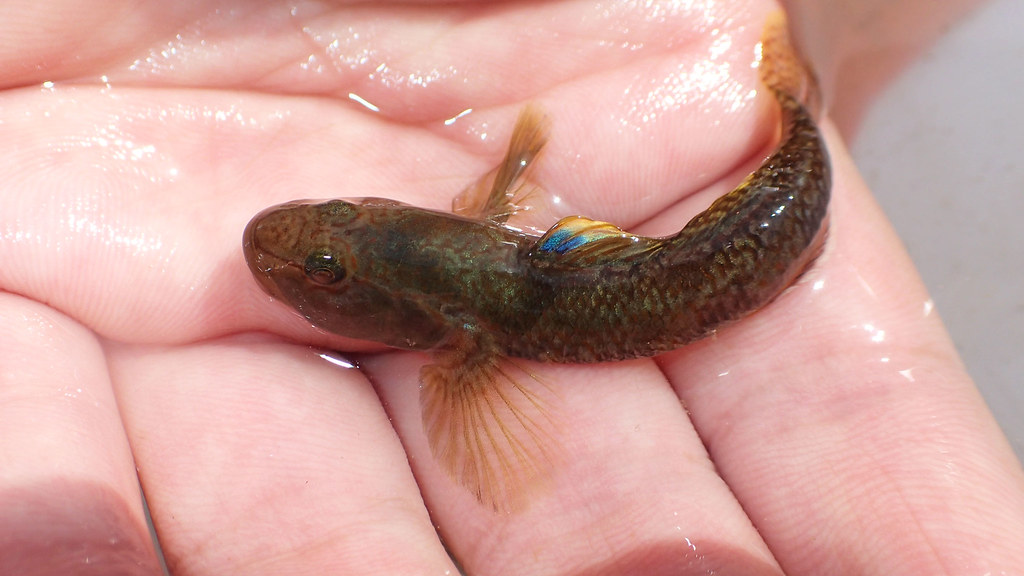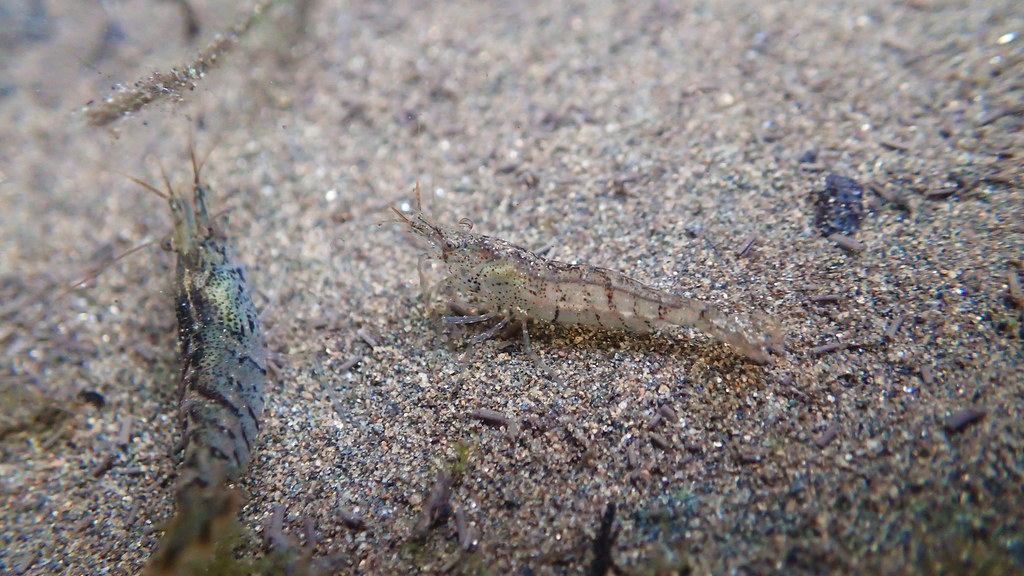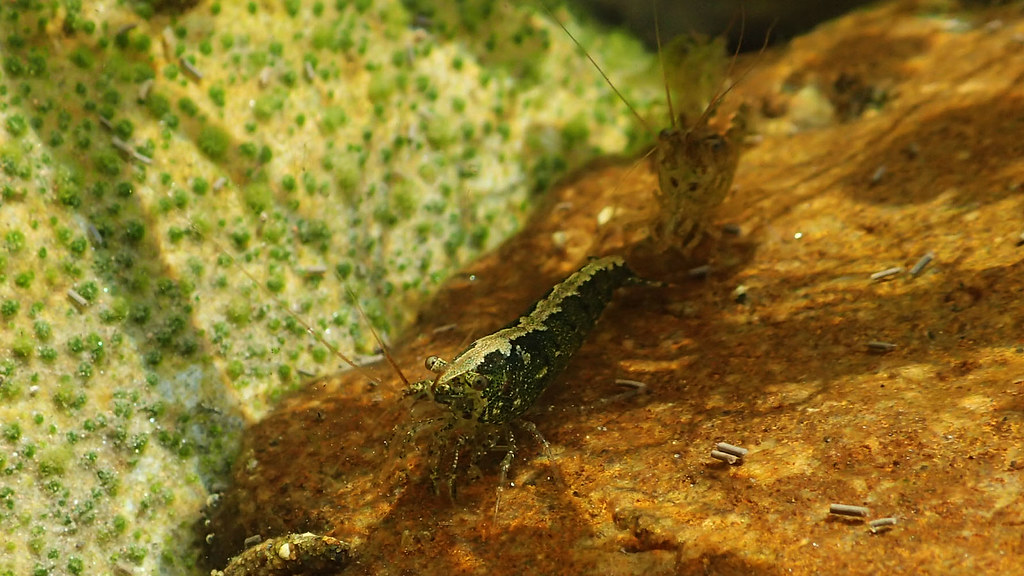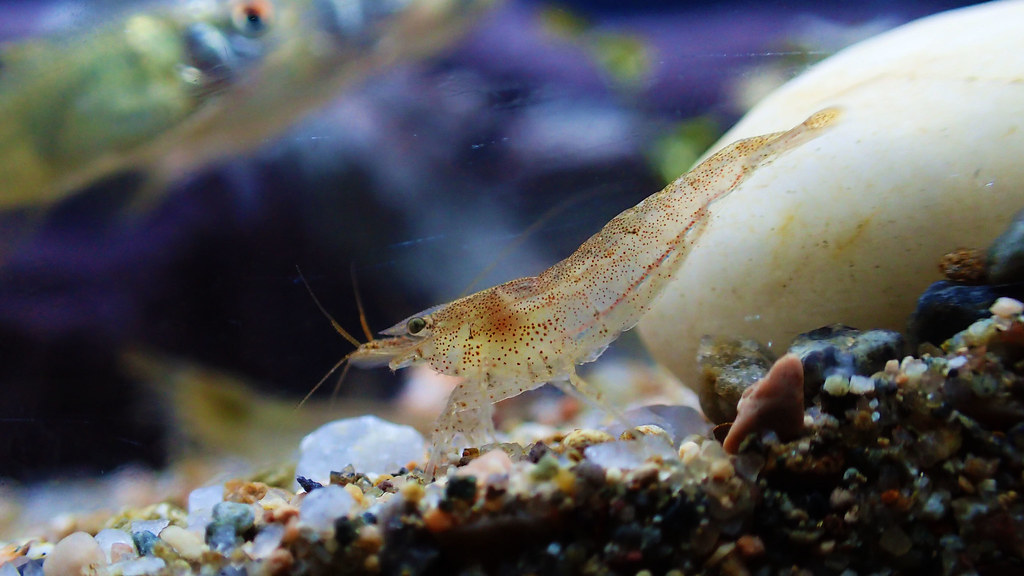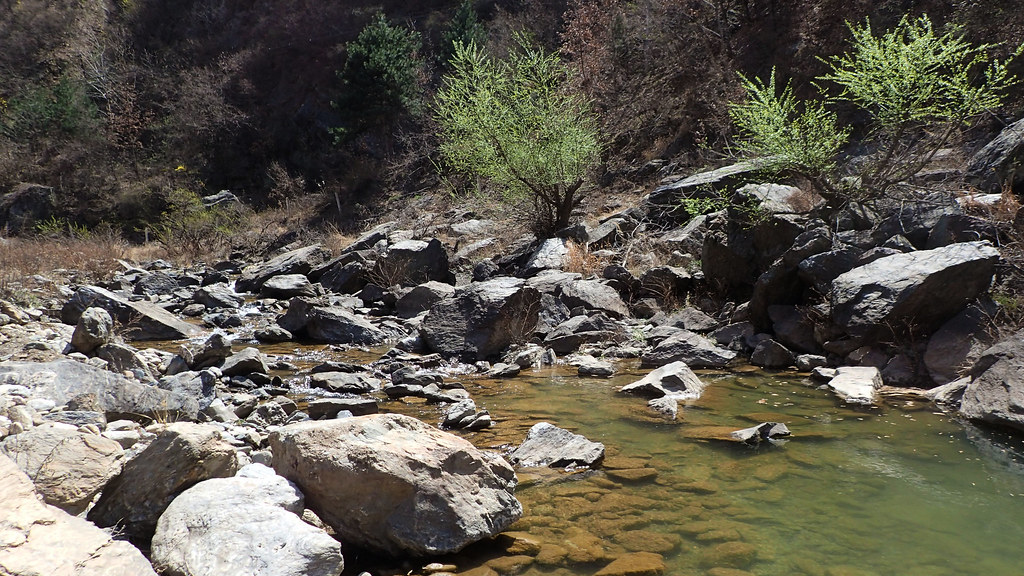I almost forgot this one, a close relative to Southern Redbelly Dace, Rhynchocypris oxycephalus, which was put in Phoxinus as Chrosomus was. The only thing is that it's not as colorful as Chrosomus species are. This fish can be found in upstream or headwaters of small size mountain creeks, and sometime, you can found only this species in headwaters. They are very typical cold water lovers, barely found from downstream of creeks and rivers.
I got this one from a creek of Luo River Basin, which has hundreds of springs along it. The water is cool and Rhynchocypris oxycephalus are abundant from the headwaters to downstream. This one has a very sharp snout, which is a perfect example to explain the Chinese name for this fish, 尖头大吻鱥, which means sharp-snout and large-mouth dace. Only some really large adults have this feature.

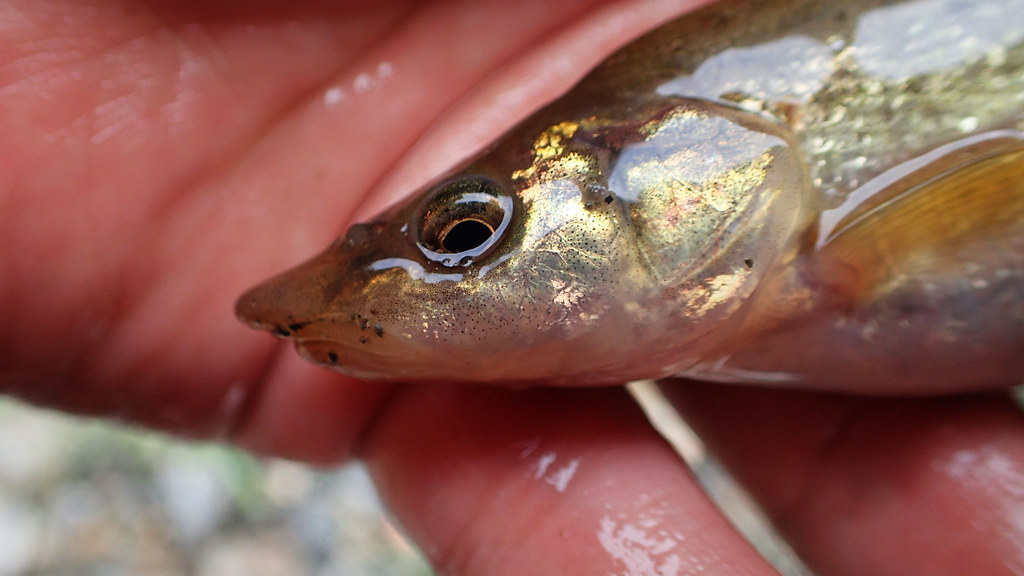
Environment


This fish are common in the mountain creeks all the way from Liao River Basin of Nothern China to the Yangtze River basin of Southern China. The following are some of the pictures of the same species from Han River Basin in the south part of my hometown.
schooling in a tiny pond of a tiny creek (Han River Basin)

Got this one by a tiny hook with a very small steaming bread as bait.

environment, the water was bone chilling cold.
